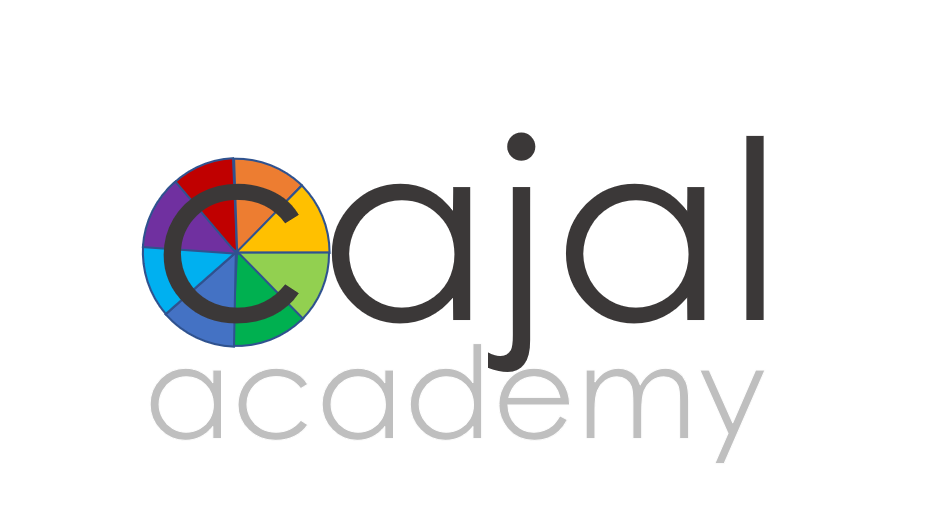Purposeful, real world problem-based learning
Deep engagement with standards-based academics through multi-disciplinary “deep dives” into real world problems.
Watch this video to get an overview from our co-founder and Head of School on how we integrate academic standards and expert therapies into multi-disciplinary project based learning.
Project-based learning is a curricular framework that has been demonstrated to outperform traditional educational models for students ranging from the elementary level to advanced placement courses. At Cajal Academy, we built on this powerful framework to develop the critical thinking, executive function and social skills that students who have meaningfully unique ways of seeing things the skills they’ll need to turn those perspectives into thought-leadership as the adults they will become.
We do this through a multi-disciplinary approach to project-based learning that helps students develop their vision of the changes they’d like to help create in the world; the critical thinking skills that give them original insights into how to solve those problems; and the executive function skills needed to turn those insights into action.
These projects bring our students together as a single community as well. Our students learn state curriculum standards within ability-based classes, and then collaborate with one another to solve real world problems that require them to master and then integrate curriculum across math, science, social studies and language arts, and then to create a novel solution manifesting that learning.
Each project provides purposeful learning that prepares students for rigorous college curricula while helping them discover and experience an array of potential careers. Executive function, social skills and growth mindset coaching and support are integrated into each project and into the classroom itself, giving students the tools they need to experience their strengths.
Over the years, our students have done amazing things through this process, like a short film urging regulatory change to save the declining horseshoe crab population in the Long Island Sound; 3-dimensional, scaled architectural models of imagined democratic communities in the midst of feudal, 13th century Europe; proposals for new superhero characters for Marvel Comics; and designs for a portfolio of mobile apps sparking a revolution for climate change.
Read below to learn more about how we prepare our students for success in college and beyond through standards-driven, project-based learning:
Our students master standards-based academics through inter-disciplinary deep dives into real world problems
Each cross-disciplinary project starts by identifying the academic content and skills to be covered, starting with the Next Generation Science Standards and Connecticut state curriculum standards for each grade level enrolled. These are combined with the individualized therapeutic goals we have identified for each student. We then add to this the scientific content that each student needs to intellectually understand and contextualize both their differences, and how their therapeutic strategies work to address them.
From there, our team collaborates across academic and therapeutic areas to develop rigorous, real-world problems integrating these disparate areas in a truly cross-disciplinary way. These immersive project become unifying themes that are woven throughout all of our core content classes, including language arts, math, science, social studies, fine arts and even physio, social skills and social-emotional classes. Examining different facets of a problem through these multiple lenses build flexible and critical thinking and helps students learn to challenge their preconceptions and develop new perspectives. Students work together to design a course of study to answer a driving question that cannot be answered on Google, execute their plan and then manifest their learnings. Each project follows the same design process, developing transferable executive function skills. Students are assessed at the conclusion of each project to measure their progress towards mastering the curricular content and standards presented in that unit, through a competency-based approach. This recognizes that student learning is not linear and underlines our emphasis on developing a growth mindset as we continue work to develop our “not yet skills.”
Purposeful learning through real world problem solving
Students are given a driving question that require them to engage in critical thinking and analysis. Each project becomes a unifying theme that is woven throughout students’ core skills classes in math, science, language arts, social studies and the fine arts, providing purposeful, real world learning. This gives twice exceptional students the compelling reason they need to work through their fears and the challenges inherent to having the combination of outlying strengths and outlying weaknesses. This is particularly powerful for our high school learners, who have the opportunity to “try on” different professional disciplines and potential career paths as they work through real world engineering, scientific, literary, cultural and societal issues.
Social skill development through collaborative problem solving
Collaborative projects provide an organic laboratory for building the social skills kids need to communicate their unique ways of seeing things and to collaborate effectively with others as part of a team—all essential skills for college and for the 21st century economy. Social skill support is integrated into the classroom, helping students to access and develop these skills in the environments and pursuits where they naturally arise. You can find out more about our personalized social-emotional learning programs here.
“No ceiling” learning through multi-disciplinary inquiries and end products with room to develop your creativity
Rather than taking tests and quizzes, students manifest their learnings by creating products that require them to integrate, synthesize and build upon content from across multiple academic disciplines. These may range from creating a documentary to building a scale model of a roller coaster…and a whole lot more! This way of showing your learnings gives intellectually-curious kids the runway to look more deeply into areas they find interesting and develop their critical and creative thinking skills—part of our commitment to no ceiling learning for highly-gifted kids.
See examples of our project-based learning work, on our blog:
Learn more about our Vision to Voice Curriculum giving innovative kids the tools they’ll need as the innovative adults they’ll become
New to project-based learning?
Check out these videos to learn more about it:

















